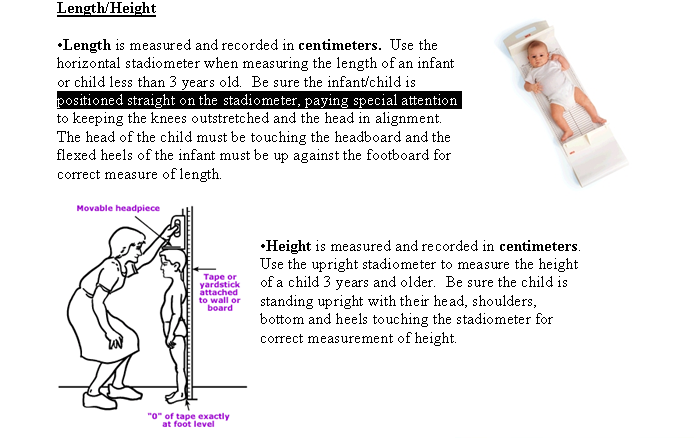PCS Clinical Competencies for MAs and HAs
Measurement of physical growth in children is a key element in evaluation of their health status. Physical growth parameters include weight, height (length), and head circumference. Values from these measurements are plotted on a graph to determine growth and development patterns.
Tools used to measure these parameters include:
•Upright scale for those who are ambulatory (figure 1), bed scale (figure 2) for those who are not ambulatory, and an infant scale (figure 3) can be used for pediatric patients weighing less than 30 pounds

•Upright stadiometer (see figure 4) for children 3 years and older or a horizontal stadiometer (see figure 5) for children less than 3 years old to measure height or length.

•Tape measures are used to measure the head circumference of children up to 3 years of age.

Use the following guidelines when measuring physical growth of children:


The
Policy:
- BICU: Weigh Patients on admissions and QD
- 8E: On admission and Q week or prn per MD order
Documentation: Record Weight in the I/O Section of CIS
Last modified: 5/30/2006 9:55 AM